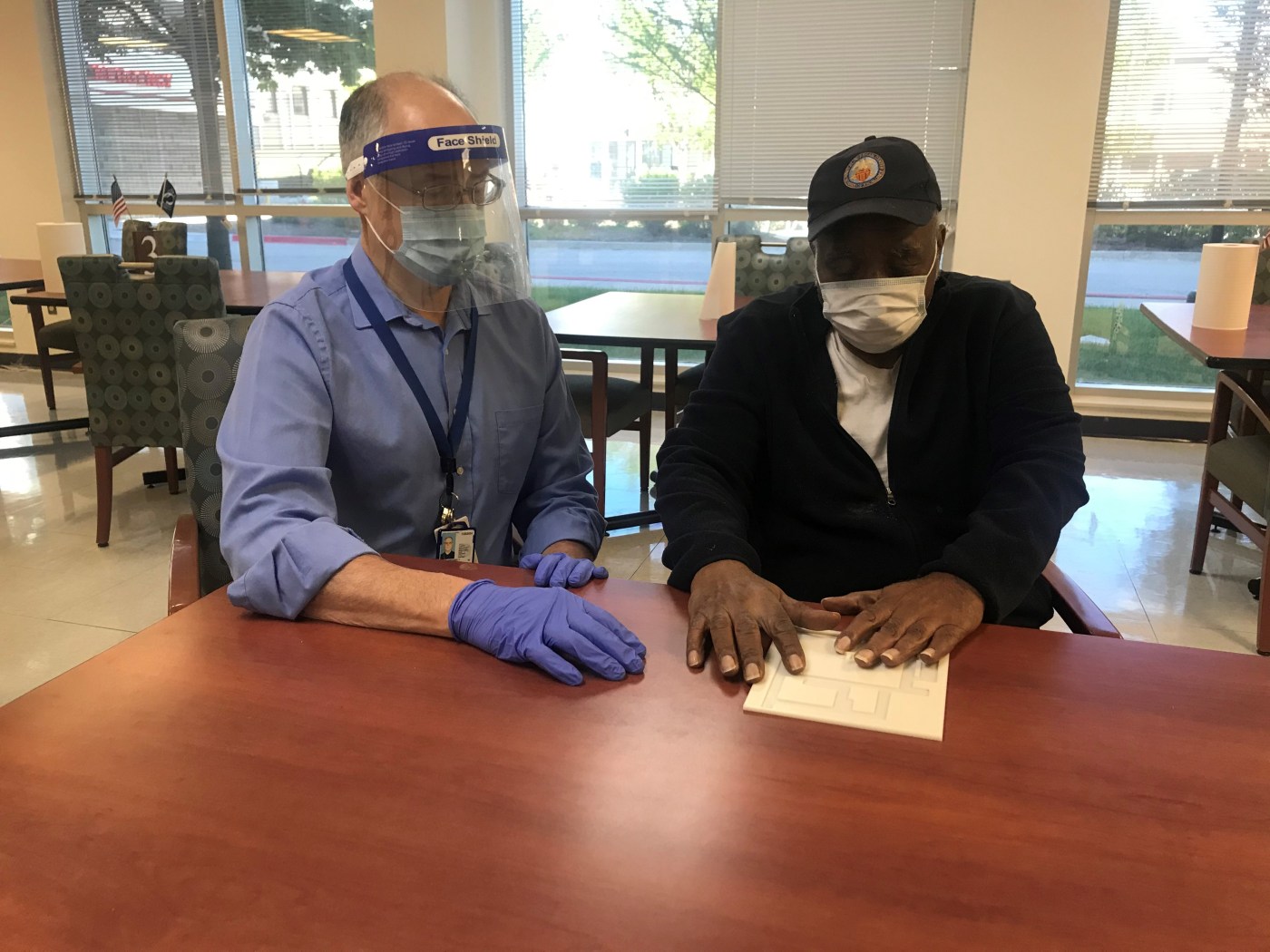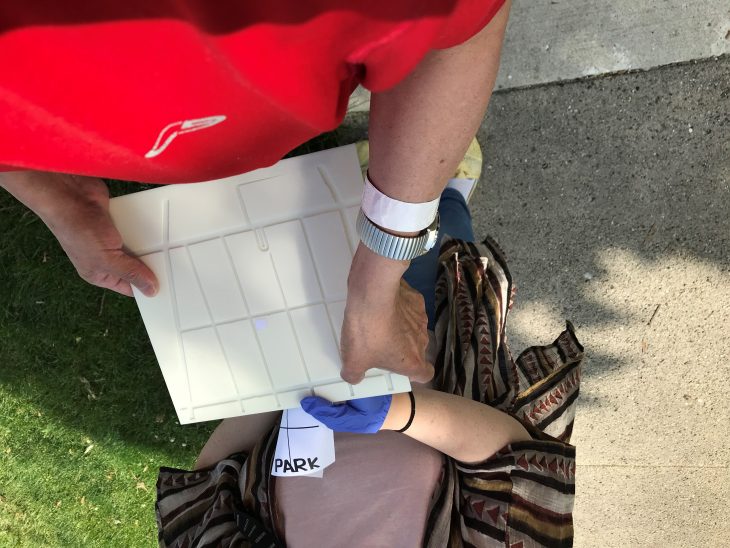Imagine walking into a large room, eyes closed, using only a cane and your hands to navigate. The room includes a hallway, a set of stairs and a reception desk in the center of the floor. Everything is new and feels like an obstacle.
For Veterans with blindness or low vision, this experience is a daily reality. But with VA’s Blind and Visual Impairment Rehabilitation Continuum of Care, Veterans with visual impairments are achieving independence in daily life through skilled rehabilitation training in orientation and mobility, daily living activities and more.
3D printing technology improves tactile maps for Veterans
To help Veterans navigate unfamiliar or complex locations, clinicians build tactile maps of rooms, buildings and city blocks. Tactile maps like these are critical for helping Veterans develop new skills in mobility and orientation. Resourceful Blind Rehabilitation Specialists have long built them out of craft supplies, constructing scale models of city streets, VA hospitals and home addresses with immaculate care and detail.
When the Central Blind Rehabilitation Center at Edward Hines Jr. Hospital received a 3D printer, years of resourceful thinking paid off. Blind Rehabilitation Specialists wondered how 3D printing might improve the efficiency and accuracy of tactile maps; with this innovative mindset, the next iteration of tactile maps was born.
Today, multiple sites in the VA Blind and Visual Impairment Rehabilitation Continuum of Care can print tactile models of home addresses, street layouts and buildings in a handful of hours. Before, it took days. Importantly, the maps are now depressed, rather than raised, allowing Veterans to trace their own neighborhood or hospital campus with their fingers, feeling for difficult obstacles like busy intersections or complicated corridors.
Blind and Visual Impairment Continuum of Care Programs are exploring other use cases for 3D printing technologies, including adaptations to appliances, cane holders and Braille games, like playing dice. Evi Klein, Service Chief at the Western Blind Rehabilitation Center in Palo Alto, CA, and her team are partnering with museums to make art more accessible to the visually impaired through 3D models of visual sculptures. Through innovative technologies and dedicated staff, VA is increasing independence and safety for Veterans with visual impairments.
For more information
Blind and Visual Impairment Rehabilitation Continuum of Care programs are working with VHA’s 3D Printing Network to share knowledge, expand resources and learn about additional use cases for 3D printing in the Blind and Visual Impairment Rehabilitation Continuum of Care. Veterans and their Caregivers can learn more about VA’s Blind and Visual Impairment Rehabilitation services at VA Blind and Visual Impairment Rehabilitation | Veterans Affairs.
Beth Ripley, MD, Ph.D., is the enterprise lead for the VHA 3D Printing Network Initiative, director for VA Ventures, and chair for the VHA 3D Printing Advisory Committee.
Topics in this story
More Stories
Study underscores important role COVID vaccination can have in protecting Veterans from infection and reducing long-term health consequences
Columbia VA’s robotic surgery teams completed their 800th robotic surgery and are on schedule to hit 1,000 by the end of the year.
In a decentralized clinical trial, Veterans can participate from their own homes or local VA instead of having to travel to a research site.







